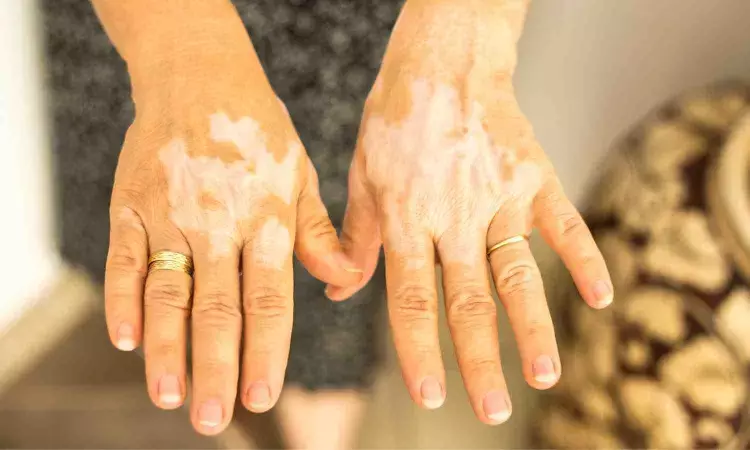- Home
- Medical news & Guidelines
- Anesthesiology
- Cardiology and CTVS
- Critical Care
- Dentistry
- Dermatology
- Diabetes and Endocrinology
- ENT
- Gastroenterology
- Medicine
- Nephrology
- Neurology
- Obstretics-Gynaecology
- Oncology
- Ophthalmology
- Orthopaedics
- Pediatrics-Neonatology
- Psychiatry
- Pulmonology
- Radiology
- Surgery
- Urology
- Laboratory Medicine
- Diet
- Nursing
- Paramedical
- Physiotherapy
- Health news
- Fact Check
- Bone Health Fact Check
- Brain Health Fact Check
- Cancer Related Fact Check
- Child Care Fact Check
- Dental and oral health fact check
- Diabetes and metabolic health fact check
- Diet and Nutrition Fact Check
- Eye and ENT Care Fact Check
- Fitness fact check
- Gut health fact check
- Heart health fact check
- Kidney health fact check
- Medical education fact check
- Men's health fact check
- Respiratory fact check
- Skin and hair care fact check
- Vaccine and Immunization fact check
- Women's health fact check
- AYUSH
- State News
- Andaman and Nicobar Islands
- Andhra Pradesh
- Arunachal Pradesh
- Assam
- Bihar
- Chandigarh
- Chattisgarh
- Dadra and Nagar Haveli
- Daman and Diu
- Delhi
- Goa
- Gujarat
- Haryana
- Himachal Pradesh
- Jammu & Kashmir
- Jharkhand
- Karnataka
- Kerala
- Ladakh
- Lakshadweep
- Madhya Pradesh
- Maharashtra
- Manipur
- Meghalaya
- Mizoram
- Nagaland
- Odisha
- Puducherry
- Punjab
- Rajasthan
- Sikkim
- Tamil Nadu
- Telangana
- Tripura
- Uttar Pradesh
- Uttrakhand
- West Bengal
- Medical Education
- Industry
Study finds a strong bidirectional link between vitiligo and melasma

A recent study published in the Indian Journal of Dermatology, Venereology and Leprology uncovered a significant and previously underexplored association between vitiligo and melasma. The study involved over 1,43,000 individuals to robustly demonstrate a bidirectional relationship between these two conditions, raising important questions for dermatological diagnosis and treatment.
Vitiligo, characterized by depigmented white patches on the skin, and melasma, marked by dark, blotchy facial discoloration, are generally considered biologically distinct. The new research challenged this assumption, showing that individuals with one condition are at higher risk of developing the other, regardless of traditional risk factors such as hormonal therapies, thyroid dysfunction, or specific treatments like phototherapy and hydroquinone.
The study analyzed data from 24,436 vitiligo patients and 1,19,205 matched comparators using both retrospective cohort and nested case-control designs. Over a follow-up period, the incidence of melasma was 1.38 per 1000 person-years in patients with vitiligo, when compared to 0.88 per 1000 person-years in the non-vitiligo group. This translates to a 60% higher risk of developing melasma among those with vitiligo, even after adjusting for potential confounders (adjusted hazard ratio [HR] 1.58, 95% CI 1.35–1.86).
This study revealed that melasma may predispose individuals to vitiligo. Among vitiligo patients, 0.9% had pre-existing melasma, versus just 0.5% in the matched comparator group. Melasma was associated with a 32% increased risk of subsequently developing vitiligo (adjusted odds ratio [OR] 1.32, 95% CI 1.12–1.55), independent of melasma treatments such as hydroquinone.
These findings suggest that the 2 disorders, although visually and pathologically different, may share underlying immune or genetic pathways. The study used large-scale population data and statistical adjustment for key confounders, which adds weight to the critical findings.
Overall, this research suggests the importance of screening for melasma in patients with vitiligo and vice versa. More importantly, this raises the possibility of shared treatment targets, which potentially leads to novel dual-purpose therapies.
Source:
Sherman, S., Duskin-Bitan, H., Agiv, T., Bar, D., Marom-Haham, L., Levi, A., Mimouni, D., Chen, L.-C., Harris, J. E., Levitt, J. B., Schonmann, Y., Cohen, A. D., & Netzer, D. (2025). Bidirectional association between vitiligo and melasma: A large-scale population-based study. Indian Journal of Dermatology, Venereology and Leprology, 0(1), 1–7. https://doi.org/10.25259/ijdvl_1828_2024
Neuroscience Masters graduate
Jacinthlyn Sylvia, a Neuroscience Master's graduate from Chennai has worked extensively in deciphering the neurobiology of cognition and motor control in aging. She also has spread-out exposure to Neurosurgery from her Bachelor’s. She is currently involved in active Neuro-Oncology research. She is an upcoming neuroscientist with a fiery passion for writing. Her news cover at Medical Dialogues feature recent discoveries and updates from the healthcare and biomedical research fields. She can be reached at editorial@medicaldialogues.in
Dr Kamal Kant Kohli-MBBS, DTCD- a chest specialist with more than 30 years of practice and a flair for writing clinical articles, Dr Kamal Kant Kohli joined Medical Dialogues as a Chief Editor of Medical News. Besides writing articles, as an editor, he proofreads and verifies all the medical content published on Medical Dialogues including those coming from journals, studies,medical conferences,guidelines etc. Email: drkohli@medicaldialogues.in. Contact no. 011-43720751


